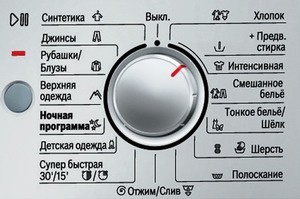
- What you need to know about Led technology?
- Advantages of
- Varieties of
- How to choose an LED TV?
- Which TVs Ice is better?
Choosing a new TV is always a pleasant experience, especially if it's a LCD panel with LED backlight. Due to high quality, such TVs are becoming more popular among consumers, but it's difficult even to answer the seller-consultant how to choose Led TV among a huge assortment. Often, in the store, you can only learn about the diagonal and hear general words about unsurpassed quality and many additional functions. However, a rare buyer can make his choice based on dry facts, and not on the advertising slogans read on the big-boards on the way to the store. Today we will try to help you choose your TV, which will please all households for many years.
to the contents ↑What you need to know about Led technology?
LED( with the English "light-emitting diode") is a light-emitting diode. This technology is also used in street lamps, car lights, traffic lights and other areas, far from home appliances. However, in TVs, this technology has found its application. The LED TV is a type of LED-backlit LCD device. It is LEDs that act as the main source of light, which is directed to liquid crystals and creates an image.
The only difference between LCD and LED TV is the backlight, in the first case, it's a lamp, and in the second - diodes. This seemingly insignificant difference introduces a number of constructive differences and features of the two types of devices.
to content ↑Advantages of
Here are just a few advantages of LED TVs:
- Better image.
- Thin display.
- Dynamic contrast.
- Consumes much less power.
- Light weight.
- Ecological cleanliness.
- Long service life.
Species
Depending on the location of the backlight LED TVs are divided into two types:
- White LED.The backlight is located only at the edges, which allows you to distribute the light evenly.
- RGB LED.LEDs are located over the entire area of the LCD matrix, which improves the image quality. This technology is much more expensive, and as a consequence - TVs with side lighting are much more.
How to choose an LED TV?
After reading the theory, we turn to practice. To find a Led TV, you need to familiarize yourself with the following device parameters:
- Diagonal screen.
- Resolution and screen format.
- Scanning frequency.
- Backlight type.
- Additional functions( 3D, Smart and others).
- Screen coverage.
- Availability of functional connectors.
Let's consider the device parameters in more detail.
Screen size
Of course, the impression of viewing on the big screen is much brighter than on the small one.
Important! The screen diagonal parameter is measured in inches( 1 inch by 2.54 cm).It shows the distance between the two opposite corners of the display.
It depends not only on the location of its location in the room, but also on the minimum distance to the viewer, from what size of the diagonal your TV will have.
It is necessary to choose the diagonal of the TV, based on the size of the room. In stores you can see devices with a diagonal of 10 to 80 inches, so that you can select LED TV not only in the living room, but also in the kitchen and in the nursery:
- For a large room, choose a diagonal of at least 32-42 inches. For such a TV, 2.5-3 meters is enough to ensure the best picture quality.
- When purchasing a TV of very large sizes( with a diagonal of 50-60 inches), make sure that you have enough space for it so that such a "giant" can show itself in full glory.
- To buy a TV with a diagonal of less than 30 inches simply does not make sense, because in this case you can not enjoy all the delights and capabilities of Led technology.
Important! With the increase in screen size, the cost of equipment also increases, so approach the selection seriously and carefully. If you buy a small, you can not enjoy all the charms of technology, if too large - cumbersome and expensive.
Resolution and screen format
High resolution allows you to improve image quality. The resolution of the display is the number of pixels along the vertical and horizontal lines of the screen.
Important! From the resolution of the screen depends on the degree of detail of the picture and, the higher it is, the more small details and special effects we can observe when watching a movie.
In the store you can see the following characteristics: 1920x1080, which means 1920 pixels horizontally and 1080 vertically. The more these values, the better.
Important! Digital TV HDTV is very demanding on this parameter. To watch movies as HD, choose a technician with the following resolution: 1280x720( for quality 720p), 1920x1080( for 1080I).
If you do not plan to watch programs and movies in high quality, then standard resolution will be enough. However, remember that a low resolution can cause sharp transitions between colors and other errors caused by a lack of pixels. 
A few words about the screen format. There are many image formats that depend on the signal source. For example:
- analog broadcast( antenna) uses a 4: 3 format( 720x576 resolution);
- "widescreen models", in which the ratio of width to height 16: 9, is ideal for digital and satellite TV.
- today you can even recreate a real cinema at home, for this the format of 21: 9 and the resolution of 2560x1080 is suitable.
Important! We recommend choosing a "wide" format, as a great future is predicted for him.
Scanning frequency
This parameter determines the refresh rate( frame expansion) on the display. The frame rate is responsible for the smooth transmission of the picture. Especially it concerns dynamic moments.
Important! The frequency of picture changes since the time of kinescope TVs and to this day is measured in Hertz( Hz).The physical value of 1 Hz is 0.01 seconds. For example, a value of 60 Hz informs that the TV refreshes the picture 60 seconds in 1 second.
Modern TVs should have a frame rate of 100 Hz or more. Today there are already devices with a value of 1000 Hz and higher.
You can choose a Led TV, equipped with a very clever mechanism, allowing 60 Hz to get 120 and even 240 Hz. The basis of this mechanism is the addition of intermediate frames that can stabilize the picture, even in the most dynamic scenes.
Another method that allows you to increase the sweep is the use of a scanning backlight. This technology allows you to quickly identify the necessary time to change the brightness of the entire display.
Important! Choose a model that has two of the above technologies, allowing you to get 800-900 Hz quality scan. During the purchase of equipment, you can bring your video materials to make sure in the place of high-quality work of the TV when displaying dynamic scenes.
Backlight type
LED TV has either a side or back light of the screen:
- The first option involves placing the LEDs on the edges of the display. It is this technology that makes it possible to make the device model incredibly thin.
- The second option uses the location of the diodes behind the screen, so that the illumination is more uniform. This makes it possible to provide a quality contrast level( saturated black instead of gray).The reverse side of the coin is the overall thickening of the device, caused by its "multilayered": a layer of diodes-diffuser-screen with liquid crystals.
Important! In practice, there is no particular difference between the two kinds of illumination, just evaluate the model you like on the uniformity of natural colors: black should be black, and white - white, skin color should not give yellow or red. Evaluate the image features with different types of lighting and select the LED TV that best suits your wishes and expectations.
Screen coating
There are advantages to matte and glossy coatings. Everything depends on the room in which the TV will be:
- The glossy version allows you to get a brighter, contrastier picture, but because of its mirror image, it can turn into a source of glare in sunny weather or in case the lamps are facing the device. From the mirror surface can also get tired eyes.
- Matte screens do not have such a clear image, but glare is eliminated 100%.
Important! To properly choose the type of coverage, rely on your preferences and the features of the location of the house. If the windows and lighting are behind the screen, you can choose to glossy display and enjoy a clear and intense picture.
A set of functional connectors
Modern TV has a built-in electronic unit, the so-called tuner, which monitors the reception of satellite, digital or terrestrial signals. As a rule, there is one built-in tuner on board, at least two. This allows you to view multiple channels on the TV at the same time.
Try to choose a device that has maximum compatibility with different types of devices and signals. It can be provided by various connectors located on the front and back panels:
- It is mandatory for today to have HDMI connectors( for digital signal).
- It is not superfluous to have SCART and RCA connectors, for connection to devices with analog type of data transfer.
- Modern TV models are hard to imagine without a USB port, which allows you to play various media files from external storage media such as a USB flash drive, camera, player, and others.
Important! Absolutely all models of LED TVs provide a tuner for receiving a digital signal. There is also a hybrid option that combines the ability to receive analog and digital signals. Therefore, if there is such a possibility, then give preference to the hybrid tuner.
Additional features of the
In addition to the main features, the functionality of the LED device can be extended with additional options, such as "3D" and "Smart TV".
3D technologies guarantee the highest image quality, allowing to penetrate into the world of an excellent picture. Today, modern TVs can offer two options for this option:
- Active 3D.This option involves the use of glasses with an active shutter, so we see a three-dimensional picture. The disadvantage of active 3D is the high price of glasses and the frequent change of batteries. In addition, sometimes you can observe the flicker when the speed of the lens does not match the frequency of the TV.In the field of active 3D, such companies as Panasonic, Sharp, Samsung and Sony have advanced far.
- Passive. This technology uses the usual glasses with red and green lenses, allowing you to see the picture in different factions. This principle is cheaper, but requires lower image quality. If this option is right for you, then pay attention to the technique of LG and Philips.
In any case, if you want to select an Ice TV with 3D function, then compare the two types yourself( passive and active), and choose the one that suits you.
Smart TV allows you to access the Internet directly from the TV.This is a unique opportunity, not getting up from the soft sofa, plunge into the world of games, news and communication. Connects the network to the TV with an ordinary network cable or wi-fi.
Important! You can also connect a microphone and web-camera to the TV to freely communicate with friends on Skype. In addition, thanks to the Smart TV function, you can read any information from USB media.
Helpful Hints:
- If you use a wireless connection, make sure you have an integrated router in the device. Otherwise, you will have to purchase a router separately or use an existing router.
- Remember that the TV is not a full-fledged computer, so there may be difficulties with many formats. When choosing a TV, clarify all the nuances of working with Smart TV before making a purchase.
Important! One of the drawbacks of LED TVs is a weak sound. For high-quality sound, we recommend purchasing a 5.1 speaker system. If the power of the speakers suits you, then choose models with a more powerful sound, preferably stereo. Most of them have two 10 W speakers( for example, Sony KDL-22EX553 / B).
to the contents ↑Which TVs Ice is better?
Choosing an Ice TV for a home includes such an important characteristic as environmental friendliness. In many devices there are special modes - IVF.Such TVs do not contain halogens and PVC.Control panel with solar panels, and manual operation of technology in electronic form. For example, Philips introduced on the market a whole series of models of TVs "Econova", developed in the system of IVF, and LG develops such TVs and introduced organic LEDs to the market.
If you answer the question which firm to give your choice to Led TV, then the answer is one - give preference to a well-known, proven company, but not particularly expensive. For example:
- , Sony takes a large overpayment only for the brand, without any unique technical characteristics;
- and here such companies as LG, Samsung and Philips are quite worthy options, which will please you with quality and price.
Summarizing the above, we conclude that when buying a LED TV you first need to determine the main characteristics such as: screen diagonal, resolution and contrast, because it depends on these parameters, the quality of the image. With a huge number of manufacturers of equipment you can easily find the right model, because every company is struggling for quality and individuality.
We hope that you made the right choice and every evening, watching your favorite movie as a fairy tale, you no longer want to come back to reality. Pleasant views!



